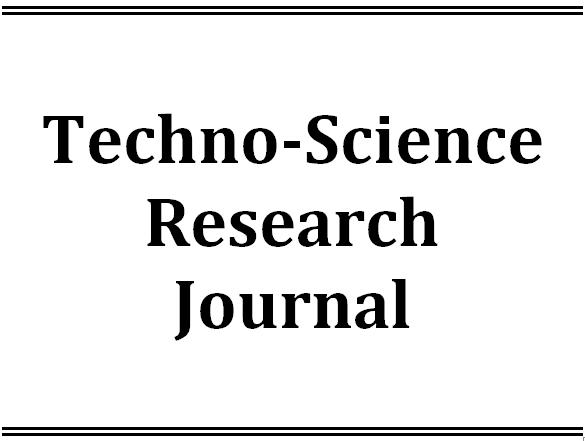Latest Issue
Empowering Education with Online Khmer Handwritten Text Recognition for Teaching and Learning Assistance
Published: August 30,2025Undergraduate Student Dropout Prediction with Class Balancing Techniques
Published: August 30,2025Status of Seawater Quality at Koh Rong Island, Sihanoukville, Cambodia
Published: August 30,2025Low-Complexity Detection of Primary Synchronization Signal for 5G New Radio Terrestrial Cellular System
Published: August 30,2025Word Spotting on Khmer Printed Documents
Published: August 30,2025Tuning Hyperparameters Learning Rate and Gamma in Gym Environment Inverted Pendulum
Published: August 30,2025Examining Passenger Loyalty in Phnom Penh Public Bus System: A Structural Equation Modelling Approach
Published: August 30,2025Prediction on Load model for future load profile of Electric Vehicle charging demand in Phnom Penh
Published: August 30,2025Economic Study on Integrating PV-DG with Grid-Tie: Case Study in Cambodia
Published: August 30,2025Optimization of Extraction Condition for Oleoresin from Red Pepper Residues
-
1. Faculty of Chemical and Food Engineering, Institute of Technology of Cambodia, Russian Federation Blvd., P.O. Box 86, Phnom Penh, Cambodia
Received: June 29,2023 / Revised: January 09,2024 / / Accepted: June 04,2024 / Available online: April 30,2025
Oleoresin is a semi-solid mixture of volatile and nonvolatile compounds that can be extracted from plants, herbs, and spices. Red pepper is widely used as a spice in food products and herbal medicine due to the presence of various bioactive substances such as phenolics and flavonoids. The experimental design for oleoresin extraction was done to define the optimum condition that could offer the highest yield of oleoresin. This study aims to optimize the extraction condition for oleoresin from red pepper residues which are the solid waste resulting from essential oil extraction from the red pepper. The optimization for the extraction condition was designed using the Response Surface Methodology with the Central Composite approach, in which extraction temperature (30 to 70 oC) and extraction time (1 to 3 h) played a role as the investigated factors. Using ethanol as the extractant at a solid-to-solvent ratio of 3g to 40 ml of ethanol, the result showed that the extraction temperature and time significantly affected the oleoresin yield. The optimum condition for oleoresin extraction from red pepper residues was obtained at 70 oC and 3 h, providing a yield of 6.38 % (w/w). At this condition, total phenolic and flavonoid contents were found to be 3.74 mg GAE/g, and 6.81 mg QE/g, respectively. The research in this study can be useful information for designing the extraction process and valorization of essential oil by-products.

